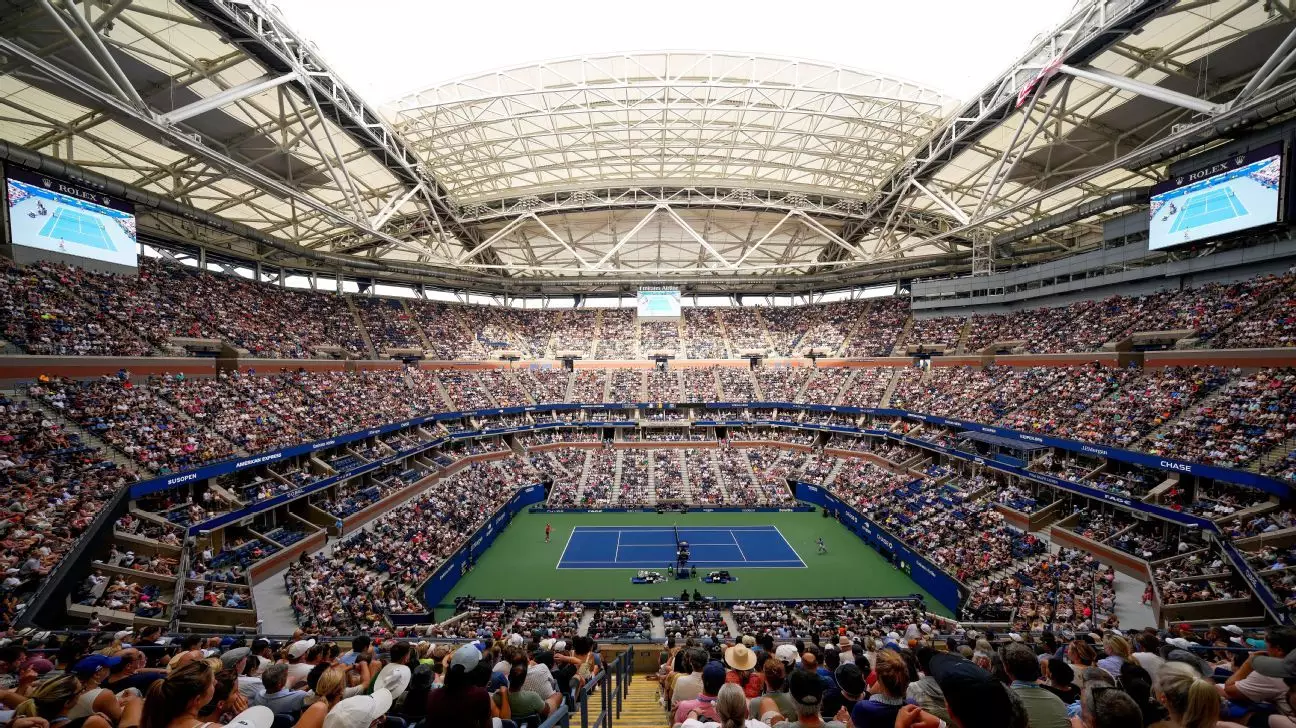The United States Tennis Association (USTA) recently unveiled an ambitious initiative to transform Arthur Ashe Stadium, positioning it as a monumental leap forward for the U.S. Open. At a staggering $800 million, this investment represents not just a financial commitment but a bold vision for the future of one of the sport’s premier venues. As the largest single investment in the history of the U.S. Open, the endeavor underscores a growing recognition of the need for continual evolution in the realm of sports entertainment, especially to cater to an ever-demanding audience.
Financial Dynamics in Professional Tennis
While the news of improvement is undoubtedly exciting, it comes at a time when the underlying financial structure of professional tennis is under scrutiny. Recent revelations, particularly a class-action antitrust lawsuit led by a coalition of players, including the notable Novak Djokovic, have cast light on the substantial revenue generated by Grand Slam tournaments—over $1.5 billion collectively in 2024—while the distribution to players is limited to a mere 10% to 20%. This disparity raises vital questions about equity within the sport. Who truly benefits from these monumental revenues? As the USTA moves forward, they must consider the impact on their athletes, potentially reshaping the landscape towards a more player-inclusive model.
Enhancing the Player Experience
The planned enhancements include the construction of a $250 million player performance center designed to enrich training and preparation for athletes. Providing players with a dedicated area adjacent to practice courts, complete with upgraded locker rooms, lounges, and additional training facilities, signals a commendable shift in priorities. It sends a clear message that the experience and well-being of players are paramount—an essential factor that could lead to greater athlete satisfaction and performance on the world stage.
Modernizing the Fan Experience
Equally remarkable are the upgrades aimed at improving the fan experience. The increase in Ashe’s courtside seating capacity from 3,000 to 5,000, along with the introduction of new luxury suites, club spaces, and dining areas, showcases a dedication to enhancing audience engagement. Although the overall seating capacity will remain stable at approximately 23,000 to 24,000, the focus on comfort and modern amenities reflects a contemporary trend in sports venues—a recognition that fans seek not only thrilling matches but also an elevated overall experience. The addition of larger concourses, updated restrooms, and increased accessibility options will enhance the atmosphere of the stadium, making it a more welcoming place for spectators of all ages.
Future Aspirations and Broader Implications
With the planned changes set to be completed by the 2027 season, the USTA aims to reinvigorate the U.S. Open’s standing within the global tennis community. However, that success hinges on balancing commercial growth with the needs of players and fans alike. As the sport continues to grow, it is crucial for governing bodies like the USTA to remain adaptable and responsive. The direction chosen here could serve as a model for other major tournaments worldwide, paving the way for significantly updated infrastructures that reflect the progressiveness and global appeal of modern tennis.
In embracing change, Arthur Ashe Stadium is not just revitalizing its own identity but potentially reshaping the fabric of tennis culture, placing emphasis on the intrinsic value of community—both among players and spectators—while inviting the next generation of tennis enthusiasts to be part of that evolution.


Leave a Reply